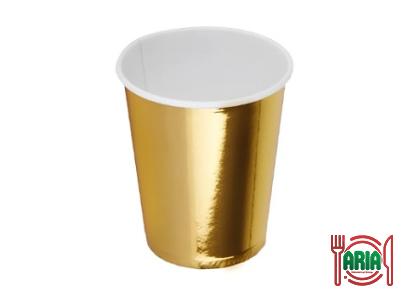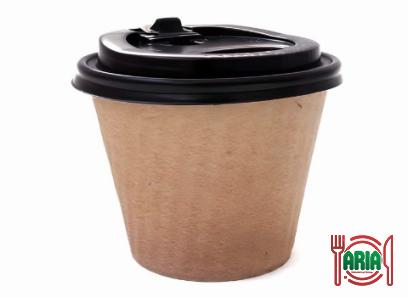When attempting to figure out how to put utensils in the dishwasher, one of the most popular points of contention is whether the Rose gold plastic cutlery including knives, forks, and spoons should be placed upside down.
Depending on how full your dishwasher is, there are a few different approaches you can take to accomplish this goal.
When loading the cutlery basket in the dishwasher, you can point the handles of the spoons upward if there is room to do so; however, if the basket is almost full, it is advisable to point the handles of the spoons downward to conserve space.
Large tools such as serving tongs and spoons may be stored on the top shelf, while pointy-end-down placement in the basket is the best option for storing forks and knives.

It is always preferable to review the owner’s handbook of your dishwasher first, regardless of whether you are using the “Team Up” or “Team Down” setting. It is necessary to consider the type of knife being used before deciding whether to put it in the dishwasher.
You can put them in the dishwasher, especially cutlery and other such items, although you should probably wash more costly knives by hand. You can put them in the dishwasher.
In most cases, this will include more costly knives like carving knives, your best steak knives, ceramic knives, and any other knives that you really care about maintaining a razor-sharp edge on.
This is since placing sharp knives in the dishwasher might eventually lead them to become dull. Therefore, cleaning your costly knives by hand (think of those you use for slicing, peeling, and chopping!) will ensure that they remain sharper for a longer period.
Even while dishwashers tend to dull knives over time, you shouldn’t be overly concerned about this happening to the cutlery knives you use on a regular basis.
Additionally, we do not always have the time to wash all our knives by hand; thus, if you are going to put them in the dishwasher, simply keep these things in mind.
There is a wide selection of materials from which to choose when purchasing silverware that is disposable. The sort of disposable cutlery that is most often used and may be found in the widest variety of settings is plastic cutlery.
Plastic cutlery can be constructed from either polypropylene or polystyrene, which are both forms of plastic. Polystyrene is the more common of the two. Polypropylene is the material that offers the greatest return on investment to produce a flexible polypropylene fork.
The most flexible type of plastic is called polypropylene, and it is the kind of plastic that may be used to produce flatware. It can withstand the maximum degree of bending and twisting until it finally gives way.
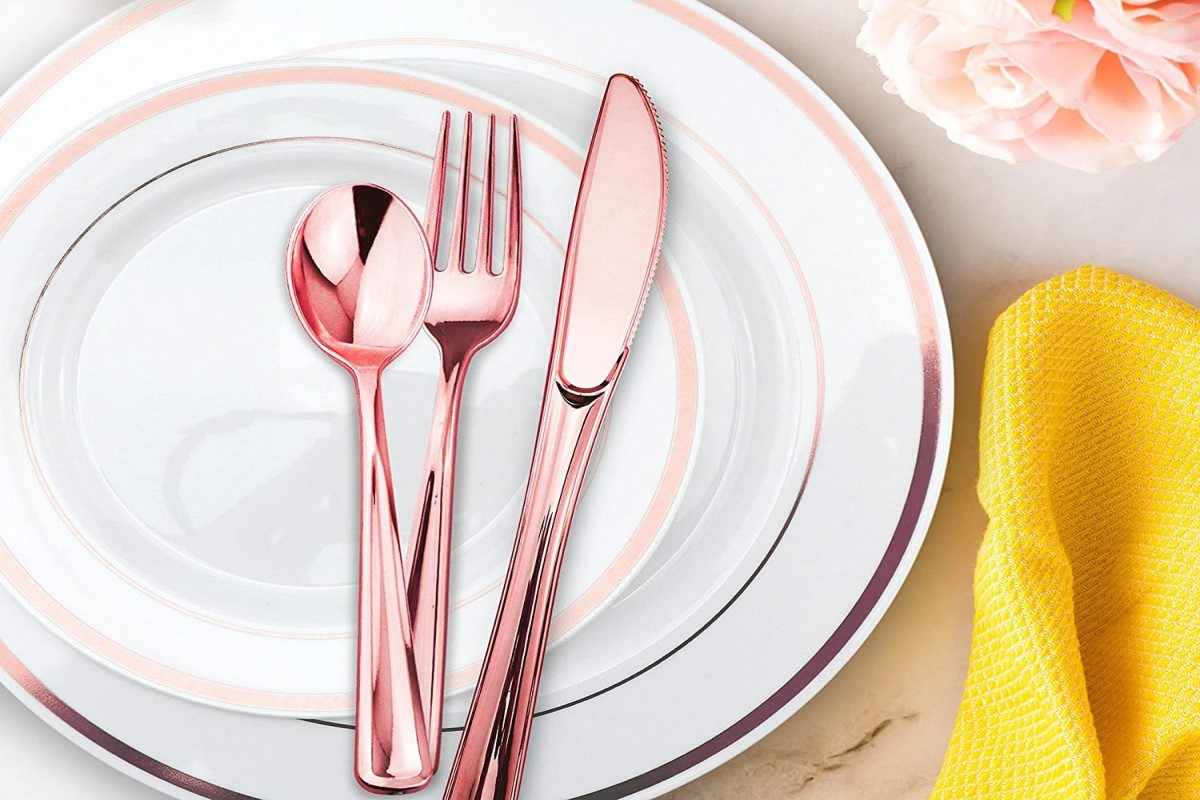
Before it starts to change shape, polypropylene can tolerate temperatures of up to 121 degrees Celsius (250 degrees Fahrenheit).
You may get polypropylene cutlery in a range of lengths, weights, and sizes, including lightweight, medium-weight, and heavyweight alternatives.
Polypropylene can also be used to make other types of cutleries. When compared to the prices of other popular polymers, polystyrene has the second-lowest average.
Before it begins to take on a distorted shape, polystyrene can endure temperatures of up to 180 degrees Fahrenheit. It comes in a variety of lengths and widths, and it may be purchased in lightweight, medium-weight, or heavy-weight forms.
This type of cutlery also goes by the acronym PSM cutlery, which is an abbreviation for plant starch material cutlery.
PSM silverware is made by combining several types of plastics, such as polypropylene, with starch materials that are sourced from plants, like as maize and potato.
This type of cutlery may be cleaned in the dishwasher.
PSM disposable silverware is more expensive than plastic cutlery composed of polypropylene or polystyrene, but it may result in cost savings when compared to alternatives for environmentally friendly throwaway dinnerware.
PSM stands for polystyrene-methyl methacrylate, and it is a kind of plastic.
In most cases, the percentage of plastic in PSM cutlery is from twenty to thirty percent, while the percentage of plant materials ranges from seventy to eighty percent.
The use of plastic gives it the appropriate density and tensile strength to be bent without cracking or breaking.
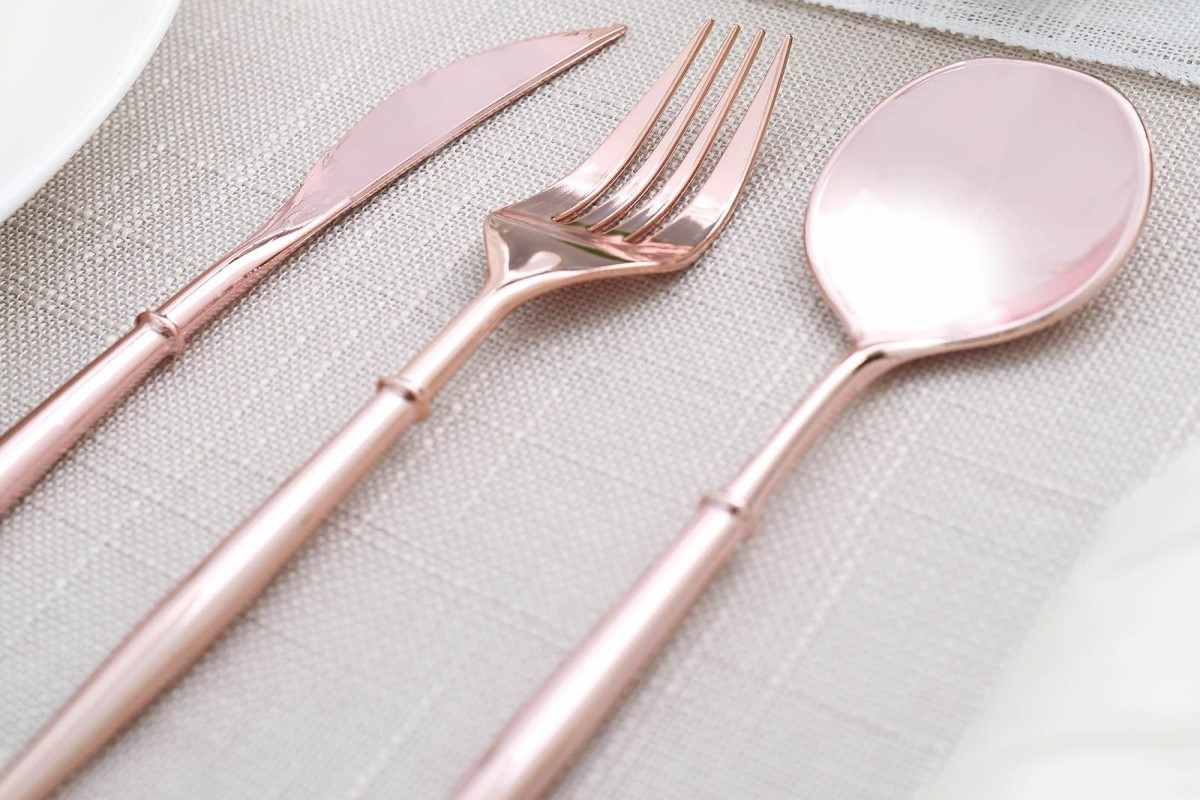
PSM can withstand temperatures of up to 176 degrees Celsius for an extended period before it begins to warp. If cutlery can be composted, either at home or in a commercial facility, it will have a smaller impact on the environment and will be more environmentally friendly.
Bamboo, Molded Fiber, CPLA (Crystallized Polylactic Acid), and Wood are some of the more environmentally friendly options available for disposable flatware.
PLA is an abbreviation that is occasionally used to refer to CPLA, which is also known as polylactic acid crystallized.
Although CPLA is more expensive than plastic cutlery which is disposable, it is the least expensive choice that is also environmentally beneficial.
Compostable cutlery that has been approved by the CPLA can take anywhere from 60 to 180 days to break down completely in commercial composting facilities. CPLA will not change shape even when exposed to temperatures as high as 185°F*.
It may be purchased in a variety of lengths and weights, including light, medium, and heavy weights. Because bamboo is a resource that can be replenished relatively rapidly, it is a great choice for use in disposable flatware.
The cost of bamboo cutlery is higher than that of CPLA and plastic. Bamboo has a cost that is comparable to that of synthetic fiber. It has been established that bamboo cutlery may be composted.
* It has a smooth texture and is quite lightweight. The temperature at which bamboo can survive is up to 176 degrees Celsius.
If you want to demonstrate your dedication to sustainability to your customers, you might want to consider using bamboo cutlery. This will make it more obvious to them that you consider the entire product life cycle when making product decisions.
Molded fiber is made from a variety of natural plant materials, including sugarcane, wheat fiber, recycled paperboard, and newspaper. Molded fiber also contains natural paperboard. The cost of molded fiber is comparable to that of bamboo.
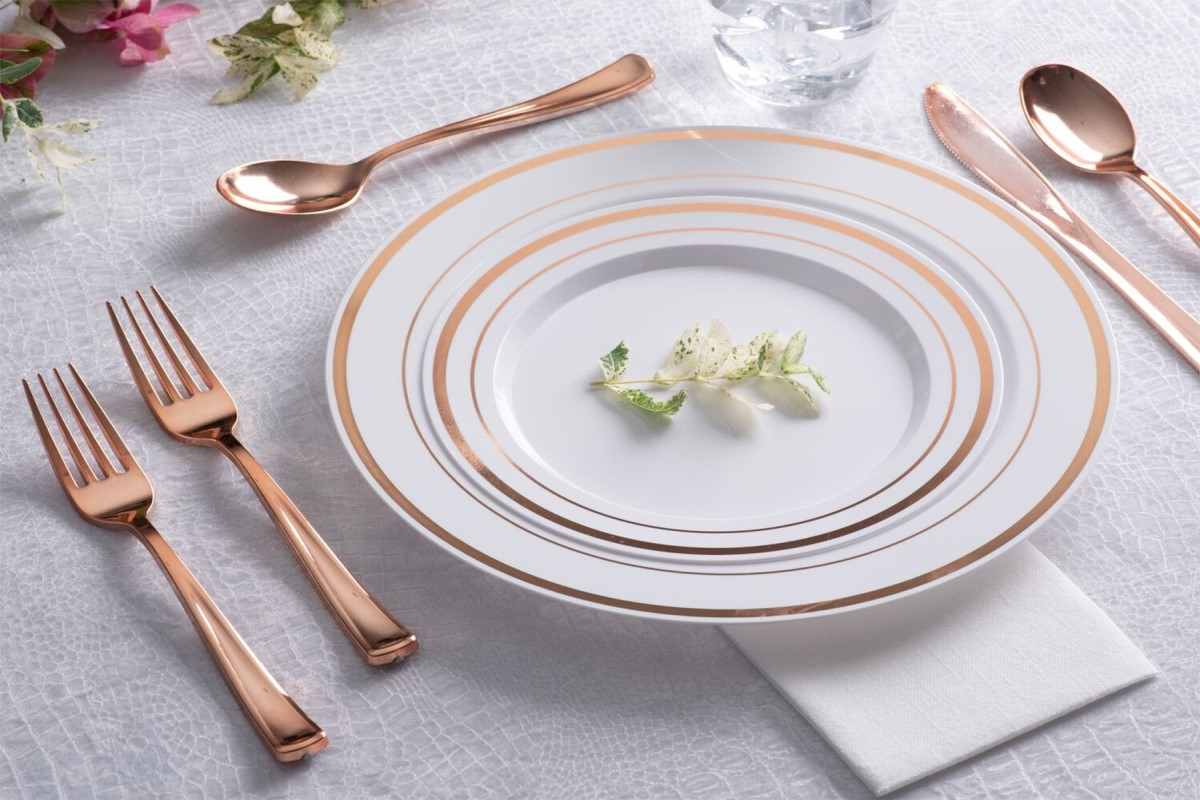
Cutlery made from molded fiber is verified as being biodegradable and has a decomposition time of between 60 and 180 days in commercial composting facilities.
Molded fiber can withstand temperatures up to 250 degrees Fahrenheit. Molded fiber is the best answer for hospitals and other institutions that require safe silverware that is not sharp, such as prisons and other correctional facilities.
Cutlery made of wood may be manufactured from a variety of tree species, including birch, pine, willow, and poplar, among others.
The most expensive component is going to be the wood. The biodegradability of cutlery crafted from wood is verified, and it may be decomposed in any setting where compost is used.
It is feasible to manufacture cutlery out of wood without resorting to the use of any chemicals. Wooden cutlery can withstand temperatures up to 200 degrees Fahrenheit.
If you want to demonstrate to your customers that you are committed to sustainability, using products like cutlery made of wood may show them that you consider the entire product life cycle when making product decisions.
Plastic cutlery has grown ubiquitous, not just in the world of fast food but also in everyday life.
This is largely due to the ease with which it may be utilized and acquired. Plastic cutlery is so easy to use and throw away that the impact that its production has on the environment because of the resources that are utilized to make it is seldom taken into consideration.
Plastic cutlery such as spoons, forks, and knives contribute to the nearly 300 million tons of waste plastic that is produced annually and discarded in our environment (Li).
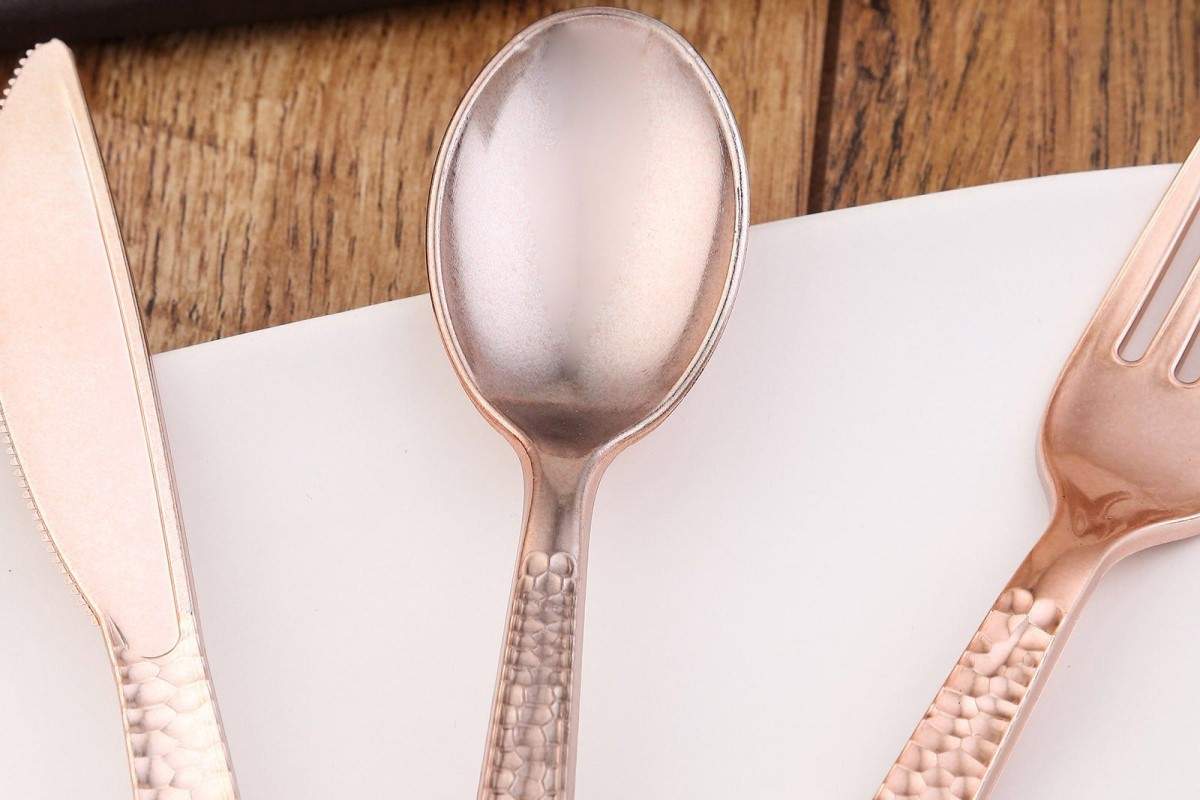
Several products now available on the market cater to a disposable form of cutlery that is friendlier to the environment. Some of these products even aim to reject the concept of disposability in favor of a reusable alternative that is more practical and easier to travel.
Despite this, plastic cutlery continues to be used extensively and then thrown away. Plastic cutlery is, in the end, an inefficient and unsustainable product since a significant number of the core components are either non-renewable or are utilized at a rate that is quicker than they can be supplied.
The production of polypropylene and polystyrene, which are then used in the production of plastic cutlery, requires several vital components, the most important of which are natural gas and oil.
These commodities are being used up at a rate that cannot be maintained for the long term.
The polymerization of natural gas is the first step in the production of polypropylene. This step entails stringing together the monomers of propylene to make polypropylene. Polypropylene is then manufactured.
Polymerization of crude oil results in the creation of polystyrene plastic, a process that is very similar to that of the manufacturing of polystyrene.
These polymers are shipped to enterprises in the form of pellets, and once they have been melted down with colorants, they are put into molds.


